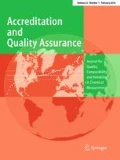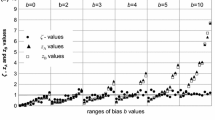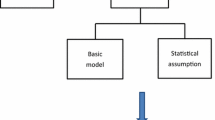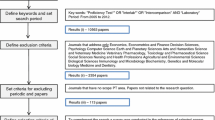Abstract
According to ISO/IEC 17025:2017, testing and calibration laboratories should apply procedures for estimating measurement uncertainty. It would thus make sense to include these uncertainty estimates in the evaluation of laboratory performance in proficiency testing. According to ISO 13528:2015, submitted laboratory-specific uncertainties can be taken into account in the assessment of the performance of PT participants by means of \(\zeta\) (or \(E_{n}\)) scores. It is important to note, however, that the laboratory uncertainties are not taken into account in the actual estimation of consensus means. In this paper, a proposal for a modification of the Hampel estimator is presented. In the original Hampel estimator, the laboratory weights are determined on the basis of a single reference quantity (e.g. \(\sigma_{\text{pt}}\)). In the modified estimator, this single reference quantity is replaced by the laboratory-specific uncertainties. Thus, all available information is taken into consideration in the estimation of the consensus mean, ensuring a greater level of reliability. Moreover, since \(\sigma_{\text{pt}}\) is no longer needed in the computation of the consensus mean, the requirements regarding minimum participant numbers can be relaxed.








Similar content being viewed by others
References
ISO 13528 (2015) Statistical methods for use in proficiency testing by interlaboratory comparison
ISO/IEC 17025 (2017) General requirements for the competence of testing and calibration laboratories
Huber PJ (2009) Robust statistics, 2nd edn. Wiley, Hoboken. ISBN 978-0-470-12990-6
Thompson M, Ellison SLR (2011) Dark uncertainty. Accred Qual Assur 16:483. https://doi.org/10.1007/s00769-011-0803-0
CCQM Guidance note: estimation of a consensus KCRV and associated Degrees of Equivalence. (2013). Version: 10. https://www.bipm.org/cc/CCQM/Allowed/19/CCQM13-22_Consensus_KCRV_v10.pdf
Author information
Authors and Affiliations
Corresponding author
Rights and permissions
About this article
Cite this article
Uhlig, S., Colson, B. & Gowik, P. Taking laboratory uncertainties into account in the Hampel estimator. Accred Qual Assur 24, 25–32 (2019). https://doi.org/10.1007/s00769-018-1332-x
Received:
Accepted:
Published:
Issue Date:
DOI: https://doi.org/10.1007/s00769-018-1332-x




